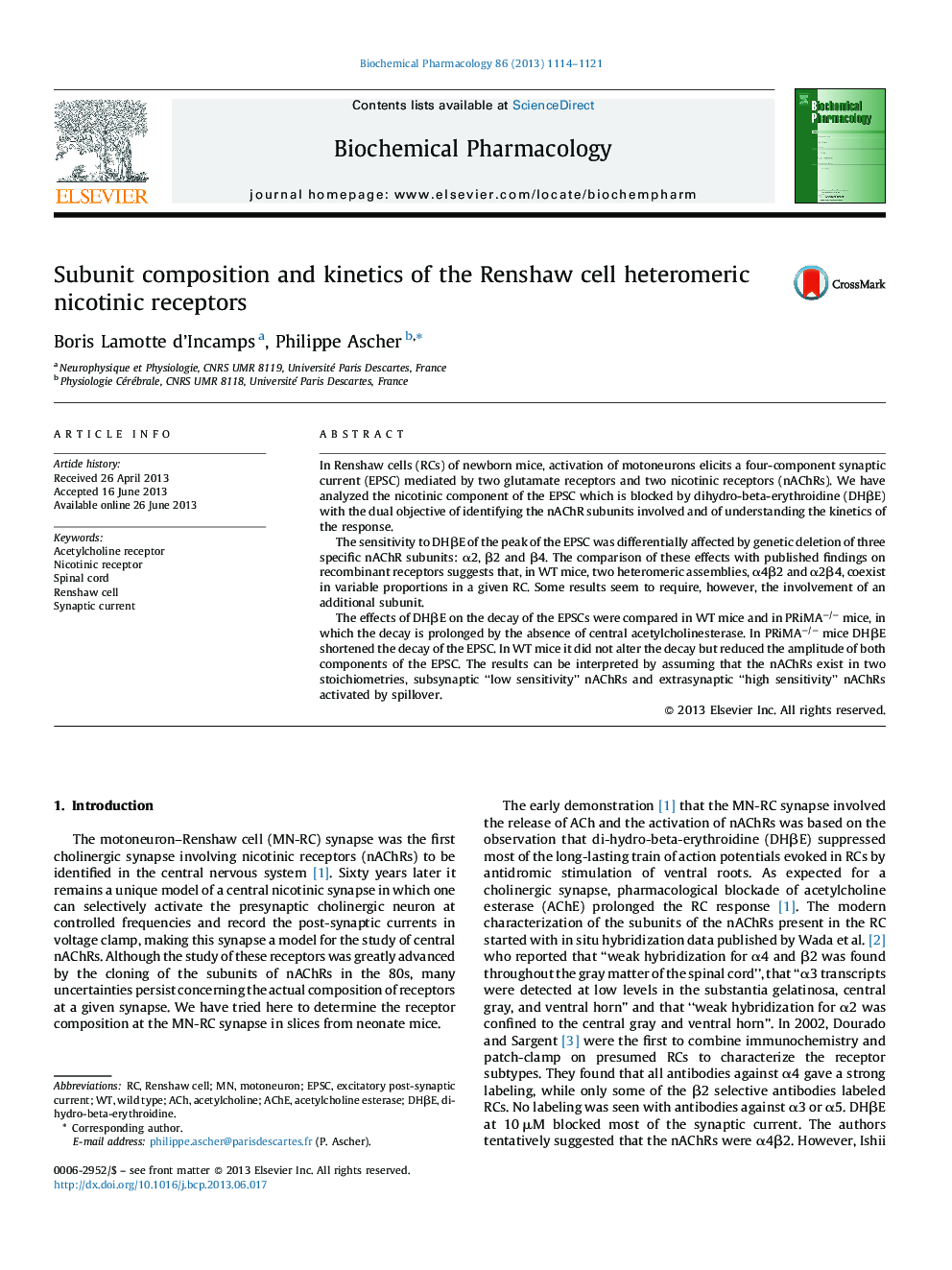| Article ID | Journal | Published Year | Pages | File Type |
|---|---|---|---|---|
| 2512548 | Biochemical Pharmacology | 2013 | 8 Pages |
In Renshaw cells (RCs) of newborn mice, activation of motoneurons elicits a four-component synaptic current (EPSC) mediated by two glutamate receptors and two nicotinic receptors (nAChRs). We have analyzed the nicotinic component of the EPSC which is blocked by dihydro-beta-erythroidine (DHβE) with the dual objective of identifying the nAChR subunits involved and of understanding the kinetics of the response.The sensitivity to DHβE of the peak of the EPSC was differentially affected by genetic deletion of three specific nAChR subunits: α2, β2 and β4. The comparison of these effects with published findings on recombinant receptors suggests that, in WT mice, two heteromeric assemblies, α4β2 and α2β4, coexist in variable proportions in a given RC. Some results seem to require, however, the involvement of an additional subunit.The effects of DHβE on the decay of the EPSCs were compared in WT mice and in PRiMA−/− mice, in which the decay is prolonged by the absence of central acetylcholinesterase. In PRiMA−/− mice DHβE shortened the decay of the EPSC. In WT mice it did not alter the decay but reduced the amplitude of both components of the EPSC. The results can be interpreted by assuming that the nAChRs exist in two stoichiometries, subsynaptic “low sensitivity” nAChRs and extrasynaptic “high sensitivity” nAChRs activated by spillover.
Graphical abstractThe inhibition by di-hydro-beta-erythroidine (DHβE) of the Renshaw cell nicotinic EPSC is compared to the inhibition of recombinant nAChRs. The differences indicate the presence of multiple nAChR subtypes in native receptors.Figure optionsDownload full-size imageDownload as PowerPoint slide
